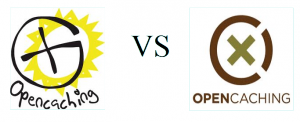The John Jermaine Memorial Library in Sag Harbor, New York recently listed their 6 cache series, The “Sag Harbor Historic and Cultural District Geocache Hunt” on our website, and Garmin’s Opencaching.com. Sag Harbor is on the eastern end of Long Island, and is located partially in both the towns of Easthampton and Southhampton. Yes, they are two of “The Hamptons”, as made famous on TV, and in film. This Geocaching program is partially funded by a grant from The Town of Southhampton. There is a rubber stamp in each cache, and passports are available at the library. If you bring back a completely stamped passport, you will receive a certificate of completion. To see the whole series, you can look the profile the cache owner, JJMLibrary, or see them here on our map of caches. On June 11th, 2015, The Library blogged about the series on their blog, and we have received permission to reblog it here as a guest post.
The long-awaited Sag Harbor Historic and Cultural District Geocache Hunt announced in the May-June issue of our newsletter is now fully operational. Those of you who have stopped by the library hoping to get started on the hunt, can now pick up your “passports” (log sheets) at the library and begin searching. For those of you who don’t know what geocaching is, we’ve included an explanation below.
Important Note


The library’s geocaches are registered on two websites: http://opencaching.us and http://opencaching.com. (They are different…one is .us one is .com). You must create a free account at one or both of these sites in order to download the coordinates of the geocaches and play our game. Due to some technical issues, our caches are NOT listed on the most popular geocaching website, geocaching.com. But both of the sites we use are good. If you are using a Garmin GPS device to search for geocaches, you will be better served by the opencaching.com. If you are using a smartphone, opencaching.us supports the greatest number of apps.
Geocaching, and the John Jermain Geocache Hunt Explained
Geocaching is a real-world, outdoor treasure hunting game using GPS-enabled devices [e.g., smartphones]. Participants use an app on their phones to navigate to a specific set of GPS coordinates and attempt to find the geocache (container) hidden at that location. Our hunt adds an additional twist.
While looking for a way to honor Sag Harbor’s contributions to Southampton Town history during the Town’s 375th anniversary year, a few geocachers on the library staff decided to combine our love of geocaching with a bit of culture and history, and a touch of the Camino de Santiago (Wickipedia: http://en.wikipedia.org/wiki/Camino_de_Santiago).
Here’s what we came up with: six geocaches are hidden around Sag Harbor. Each one relates to a member organization of the Sag Harbor Cultural District, all of which have cultural or historic significance for Sag Harbor and Southampton. (We’re not telling which organizations. It’s part of your job to figure that out.) To join in the hunt, stop into the library and pick up a free “passport.” (This is the part that’s inspired by the Camino de Santiago.) Then go hunt for the geocaches. Each cache contains a unique rubber stamp. Use the stamp on your passport…then go find another cache. When you’ve found all six caches, bring your passport back to the library and you will receive a certificate of completion (another idea borrowed from the Camino).
As mentioned above, all of the geocaches are registered on two geocaching websites: http://opencaching.us and http://opencaching.com. These sites are treasure-troves of information on how geocaching works. You’ll need to register at one of the websites in order to get access to the information about our geocaches that is stored there, but both registration, and the app for your smartphone that will lead you to the caches, are free. You’ll find a list of geocaching apps that work with various types of smartphones below. If you don’t own a smartphone but want to play, the library has a dedicated GPS navigation device that it will loan to library card holders.
Confused? Help is also available from Eric Cohen or Mireille Stürmann at the library. Call 631-725-0049 or send an email to jjlib@johnjermain.org.
Geocaching Apps for Your Smartphone
Android
- c:geo (free and highly recommended)
- GeoCaching Buddy (fee)
- Columbus
iPhone
- GeoCaches (recommended)
- Geocaching Buddy (fee)
Windows Phone
- Me Caching Geo
- OpenBasic
This program is partially funded by a Town of Southampton 375th Anniversary grant.


